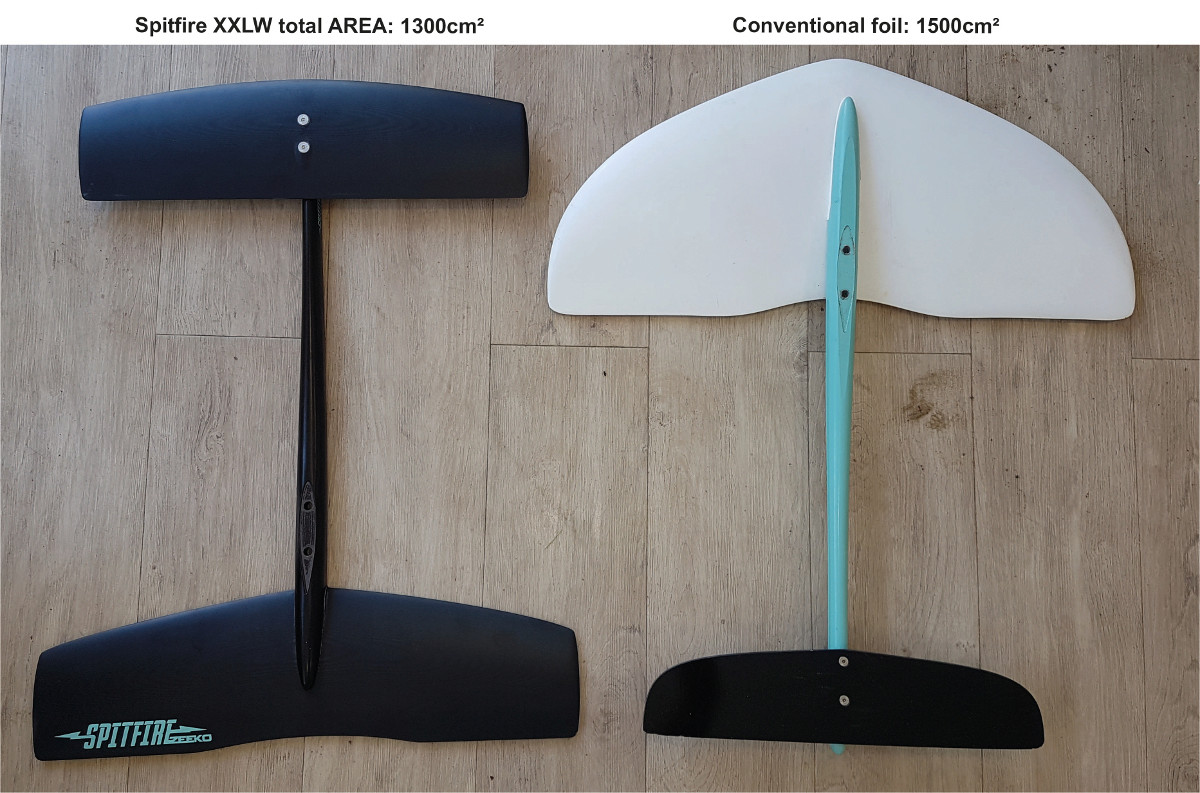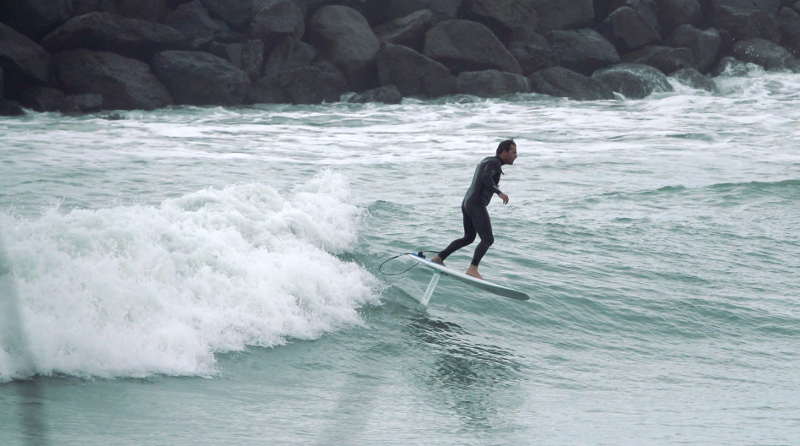Nicolas Cailllou's ITW: The Genesis of the Spitfire
Published :
01/06/2018 14:14
Categories :
Default


I have a PhD in sports sciences, which has helped me a lot in the analysis and product development.
Two friends, Laurent Ness (founder of the first Kitesurfing school) and Chris Middleton called me to show their new toy, during winter 2008: a Carafino foil.
The first trial, I felt the flight, the sensation of flying carpet and the noise free riding. In short, since then, a large part of my brain cells is dedicated to this activity, although I am far from giving up other boards (twin tip boards,surfboards).

Since then, the number of riders increase a lot, whether in kite, windsurfing but also in surf and SUP.
I ride hydrofoil for almost 10 years now, the sport is very young, there is everything to do.
Hydrofoil need innovative ideas and there are some links between the different practices (kite, surf, windsurf, stand up paddle). In this sport, there is many different tendencies (race, carving, freeride, waves etc...). So after developing racing foils (which won various national championships and also some international podiums), research and development were oriented towards the ease and fun side of the sport.
Loving very much the waves and curves, I always developed the hydrofoils according to a specific program. R&D happen in several stages, fabrics research, water flow simulations and many, many test sessions.
This results from the last 10yrs of research, very different foils depending on what each one is looking for. These years of experience allow us to have today a full range, in order to satisfy a maximum of riders.
Indeed, I had pointed out the problem of the ' classic ' foil in this practice. In race and freeride, these foils are awesome. On the other hand in the search for turns and engaged carving they are difficult to ride. It's a bit like snowboarding on a groomed ski trail. Ask a snowboarder what he prefers: to ride on a groomed trail or on 1m depth of powder (safely of course).
The difference between snowboarding in the powder and on a groomed ski trail comes is about the foot balance. On grommed trail, the control of the snowboard is made by the front leg, it is not natural. In the powder, the control is made by the back leg as in water surf.
Just chat with water surfers, they all prefer snowboarding in powder snow as the feeling is close to their habits and natural. The carving ability is controlled by the rear leg.
After long unsuccessful tests with traditional foil, I decided to make a total break in the design by trying to reproduce this back leg driving on a foil which is the holly grail for all the board sports.
Almost 50 different set ups have been designed and tested. And after 2years of R&D the SPITFIRE was born.

However as soon as it starts to turn then the foil changes its face. In the case of a classic foil, the extra power is controlled by the front leg which is very uncomfortable and limiting. This makes short turns at high speed very difficult.
With the SPITFIRE, the excess power is managed by the back leg, as in surfing, which is very natural and so the limit in the turns no longer comes from the hydrofoil but from its own ability to push on the rear leg. The feeling is at 100% that of a surf in a wave.
Also, the geometry of the foil makes feel safer.
A "classic" foil will tend to lift all the time and more and more as the speed increase, which for a beginner can be very surprising, or more difficult to manage during the bottoms turns in the waves.
The SPITFIRE does not lift radically on the opposite it is docile in all circumstances.

For the record, about one year ago, I received a message from Gautier Garanx (winner of the XXL Biggest Wave Award in 2014) who contacts me because after watching kitefoiling in waves videos he came across a video of the SPITFIRE hydrofoil. He saw the potential of such a foil for surfoiling.
After a few discuss, I did not feel too much to develop such a foil.

Seeing the videos of the competitors, I start to design a classic foil (large wing in front and small stabilizer). After a few personal trials, I got into the game of Supfoil and surfoil. Moreover, I take the opportunity to insist that during the first trials it is important to protect yourself because without habit (and even if I know how the use of hydrofoil in kitefoil and windfoil). This sport can be dangerous. So at the beginning: wear impact vest, helmet, long leg and arm wetsuit and above all a lot of humility.
And after these trials, I found myself in the same frustration as in Kitefoil, a board feeling that is not natural, difficult to control during turns and with a difficult lift control.
I decide to write a specification book of what seems to be the best foil for surfoiling and supfoiling. At this moment, I returned to the same I had been able to conceive in Kitefoil.
The SPITFIRE XXLW is born.
Thanks to the experience in Kitefoil and Windfoil, the development was faster.

But then what is the gain of a SPITFIRE XXLW for surfoiling and Supfoiling compared to a classic foil?
Just a pressure with the back foot and it takes off. A classic foil will take off immediately, and you can get caught and take the board in the head (already lived). The SPITFIRE makes the practice much more reassuring thanks to its softness.
On the other hand, the fact of having wings with less span, and especially a front wing of barely 48cm span when a classic foil fromt wing span is rather between 60 and 75cm will make the foil use and the flight much easier.
Learning is really accelerated and the radicality of turns is unbeatable.
Again on May 28th, I switched all the day long between a spitfire foil and classic foils, and I found it is much more difficult to handle than a SPITFIRE, and much less player.
What is the easiest surfoil or supfoil?
Also, for now many windsurfers want to use a their own board to limit the investment and in this case, the Tuttle or deep Tuttle box has a location too backward for a foil with a geometry like the Spitfire.
But for the ones who are looking for pure freeride, the carving, the SPITFIRE is unbeatable.

In these cases, the feeling of a noise free flying carpet above unsurfable waves will invade you.

Good ride
Nicolas Caillou
